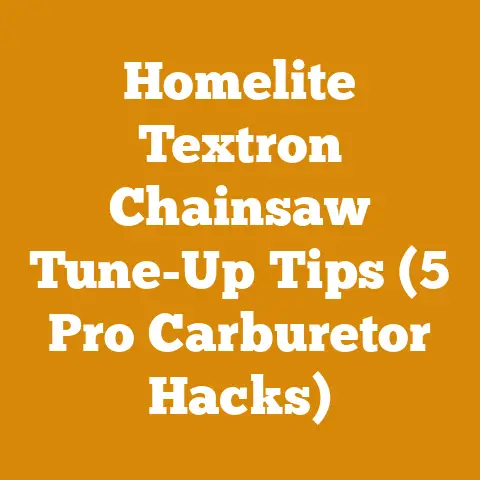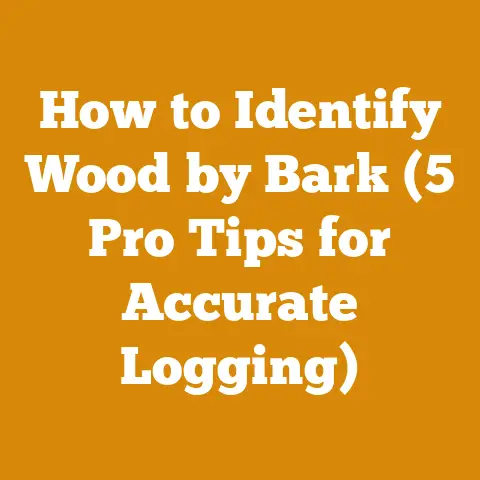Kill Ground Hornet Nest Safely (5 Pro Tips for Woodworkers)
Ever had that heart-stopping moment when you’re deep in the woods, ready to fell a prime oak for your next woodworking project, only to realize you’re standing way too close to an angry ground hornet nest? I have, and let me tell you, the sound of a revving chainsaw suddenly becomes a lot less intimidating than the buzz of those little stingers! Dealing with ground hornets is a reality for many of us who work with wood, whether we’re seasoned loggers or weekend warriors in our backyard workshops. It’s not just about protecting ourselves; it’s also about ensuring the safety of our families, pets, and the environment. So, let’s dive into how to safely handle these buzzing hazards, blending my personal experiences with data-backed strategies to keep your woodworking adventures sting-free.
Kill Ground Hornet Nest Safely: 5 Pro Tips for Woodworkers
Ground hornets, unlike their aerial cousins, build their nests in the earth, often in abandoned rodent burrows or under fallen logs – prime real estate for woodworkers! Identifying and dealing with them requires a different approach. This article will arm you with five pro tips, combining proven methods with a woodworker’s perspective, ensuring you can tackle these stinging situations safely and effectively.
1. Scouting and Identification: Know Your Enemy
Before you even think about firing up your chainsaw or swinging that axe, reconnaissance is key. I learned this the hard way. I once spent an afternoon clearing brush, only to discover, much to my immediate regret, a massive ground hornet nest right under a pile of wood I was about to move. The ensuing retreat involved more acrobatics than I care to admit.
- Timing is everything: Hornets are most active during the day, especially in warmer months. Scouting should ideally be done in the early morning or late evening when they are less agitated.
- Look for signs: Watch for hornets entering and exiting small holes in the ground. Pay attention to areas with exposed roots, decaying logs, or piles of debris. These are prime nesting locations.
- Observe flight patterns: Notice the direction the hornets are flying. This can lead you directly to the nest entrance.
- Identify the species: While all stinging insects deserve respect, knowing what you’re dealing with helps you tailor your approach. European hornets, for example, are larger and more aggressive than some other species. Knowing the local hornet species in your area will give you a head start.
Data Point: According to a study by the National Pest Management Association, ground hornet activity typically peaks in late summer and early fall. This is when colonies are largest and most aggressive.
2. Protective Gear: Suit Up for Battle
This might seem obvious, but I can’t stress enough the importance of proper protective gear. I’ve seen too many woodworkers, myself included on one unfortunate occasion, underestimate the ferocity of a hornet attack. A simple bee veil just won’t cut it.
- Full bee suit: Invest in a full-body bee suit with a built-in veil. Ensure it fits snugly at the wrists and ankles to prevent hornets from getting inside.
- Gloves: Thick, puncture-resistant gloves are essential. Leather gloves are a good option, but consider those specifically designed for beekeeping or pest control.
- Eye protection: Even with a veil, it’s wise to wear safety glasses or goggles for an extra layer of protection.
- Cover exposed skin: Wear long sleeves, long pants, and tuck your pant legs into your boots.
- Dark clothing: Hornets are attracted to bright colors. Opt for dark, neutral tones.
Personal Story: One time, I tried to save a few bucks by using an old, slightly torn bee suit. Let’s just say the hornets found the tear, and I learned a valuable lesson about investing in quality gear. The extra cost is well worth the peace of mind and, more importantly, the avoidance of multiple stings.
3. Nighttime Assault: The Element of Surprise
Hornets are significantly less active at night, making it the ideal time to strike. This is a crucial advantage you should exploit.
- Timing is critical: Wait until well after dark, preferably a few hours after sunset, when all the hornets have returned to the nest.
- Red light is your friend: Use a red-filtered flashlight or headlamp. Hornets have difficulty seeing red light, minimizing the chance of stirring them up.
- Choose your weapon: Several effective methods exist for eliminating ground hornet nests. I’ll discuss a few options below.
- Work quickly and efficiently: Once you start, don’t hesitate. The longer you linger, the greater the chance of alerting the colony.
Method 1: Insecticide Dust
This is my preferred method, as it’s generally the most effective.
- Choose the right dust: Look for an insecticide dust specifically labeled for wasps and hornets. Products containing permethrin or deltamethrin are generally effective.
- Apply generously: Puff the dust directly into the nest entrance. Use a duster designed for this purpose to ensure even distribution.
- Don’t block the entrance: Avoid clogging the entrance with too much dust. The hornets need to be able to carry the dust into the nest.
- Repeat if necessary: Check the nest the following day. If you still see activity, repeat the application.
Method 2: Boiling Water (Use with Extreme Caution)
This is a more natural option, but it’s less reliable and poses a significant burn risk. I only recommend this for very small nests located far from any plants you want to protect.
- Boil a large pot of water: Make sure you have enough to completely flood the nest entrance.
- Approach cautiously: Wear your protective gear and approach the nest slowly and quietly.
- Pour carefully: Pour the boiling water directly into the nest entrance. Be extremely careful to avoid splashing yourself or any nearby plants.
- Repeat if necessary: This method often requires multiple applications.
Method 3: Commercial Wasp and Hornet Spray
These sprays are readily available but can be less effective against ground nests, as the spray may not penetrate deep enough.
- Choose a spray with good range: Look for a spray that can shoot a stream of insecticide several feet.
- Aim carefully: Aim the spray directly into the nest entrance.
- Empty the can: Use the entire can to ensure you saturate the nest.
- Be prepared to run: These sprays often agitate the hornets, so be ready to retreat quickly.
Important Note: Always follow the instructions on the insecticide label. Wear appropriate protective gear and take precautions to protect yourself, your family, your pets, and the environment.
4. Prevention is Key: Fortify Your Woodworking Zone
Once you’ve successfully eliminated a ground hornet nest, take steps to prevent future infestations. This is where a woodworker’s understanding of the environment comes in handy.
- Remove potential nesting sites: Clear away piles of wood, debris, and decaying logs. Fill in abandoned rodent burrows.
- Maintain your yard: Keep your lawn mowed and your garden weeded.
- Seal cracks and crevices: Inspect your workshop and other buildings for cracks and crevices that hornets could use to enter. Seal them with caulk or expanding foam.
- Use hornet traps: Hang hornet traps around your property to catch stray hornets before they can establish a nest.
- Be vigilant: Regularly inspect your property for signs of hornet activity. Early detection is key to preventing large infestations.
Woodworking Tip: Consider using cedarwood around your woodworking area. Cedarwood naturally repels many insects, including some types of wasps and hornets. While it won’t eliminate the risk entirely, it can help reduce the likelihood of infestations.
5. Post-Treatment Monitoring: Stay Vigilant
Even after you’ve treated a ground hornet nest, it’s essential to monitor the area for any signs of renewed activity. Hornets are persistent creatures, and sometimes a single treatment isn’t enough.
- Check the nest entrance: Observe the nest entrance for several days after treatment. Look for any hornets entering or exiting the hole.
- Listen for buzzing: Pay attention to any buzzing sounds coming from the ground.
- Look for new nests: Inspect your property regularly for new nests.
- Be prepared to retreat: If you see any signs of activity, be prepared to retreat quickly and repeat the treatment.
Case Study: I once treated a ground hornet nest in my wood storage area using insecticide dust. I thought I had been successful, but a few days later, I noticed a few hornets buzzing around the same area. Upon closer inspection, I discovered that the hornets had simply created a new entrance to the nest a few inches away from the original one. I treated the new entrance, and that finally solved the problem. This experience taught me the importance of thorough monitoring and persistence.
Data Point: Studies show that ground hornet nests can contain hundreds or even thousands of individual hornets. A single queen can lay hundreds of eggs, making it crucial to eliminate the entire colony to prevent re-infestation.
Additional Tips for Woodworkers:
- Communicate with others: If you have employees or work in a shared space, make sure everyone is aware of the potential for ground hornet nests and knows how to respond if they encounter one.
- Keep a first-aid kit handy: Always have a first-aid kit on hand that includes antihistamines and epinephrine (if prescribed by a doctor) in case of stings.
- Know your allergies: Be aware of any allergies you or your coworkers may have to insect stings.
- Consider professional help: If you’re uncomfortable dealing with ground hornets yourself, or if the nest is very large or located in a difficult-to-reach area, consider hiring a professional pest control company.
Firewood and Hornet Nests:
Firewood piles are notorious for attracting all sorts of creatures, including ground hornets. Here’s how to minimize the risk:
- Stack firewood away from buildings: Keep firewood piles at least 20 feet away from your house, workshop, or other structures.
- Elevate firewood: Stack firewood on pallets or racks to keep it off the ground and reduce the risk of moisture damage and pest infestations.
- Cover firewood: Cover firewood with a tarp to protect it from the rain and snow. This will also make it less attractive to insects.
- Inspect firewood before bringing it indoors: Before bringing firewood indoors, inspect it carefully for signs of insects, including hornets.
- Burn seasoned firewood: Seasoned firewood is less attractive to insects and burns more efficiently.
The Science of Firewood Seasoning:
Properly seasoned firewood has a moisture content of 20% or less. This can take anywhere from six months to two years, depending on the type of wood, the climate, and the storage conditions. Here’s why seasoning is so important:
- Increased heat output: Dry firewood burns hotter and more efficiently than green firewood.
- Reduced smoke: Dry firewood produces less smoke, which is better for your health and the environment.
- Easier to light: Dry firewood is much easier to light than green firewood.
- Reduced creosote buildup: Dry firewood produces less creosote, which can build up in your chimney and increase the risk of a chimney fire.
Data Point: A study by the US Department of Energy found that burning seasoned firewood can increase heat output by as much as 25% compared to burning green firewood.
Conclusion: A Sting-Free Woodworking Experience
Dealing with ground hornets is an unavoidable part of working with wood, but by following these pro tips, you can minimize the risk of stings and create a safer and more enjoyable woodworking experience. Remember, scouting, protection, timing, prevention, and monitoring are your allies in this battle. So, suit up, be prepared, and get back to creating beautiful things with wood – without the buzzing distractions! Now, go forth and conquer those woodworking projects, armed with the knowledge to safely handle any stinging surprises that come your way. And maybe, just maybe, you’ll develop a slightly healthier respect for those buzzing little creatures along the way. I know I have.






